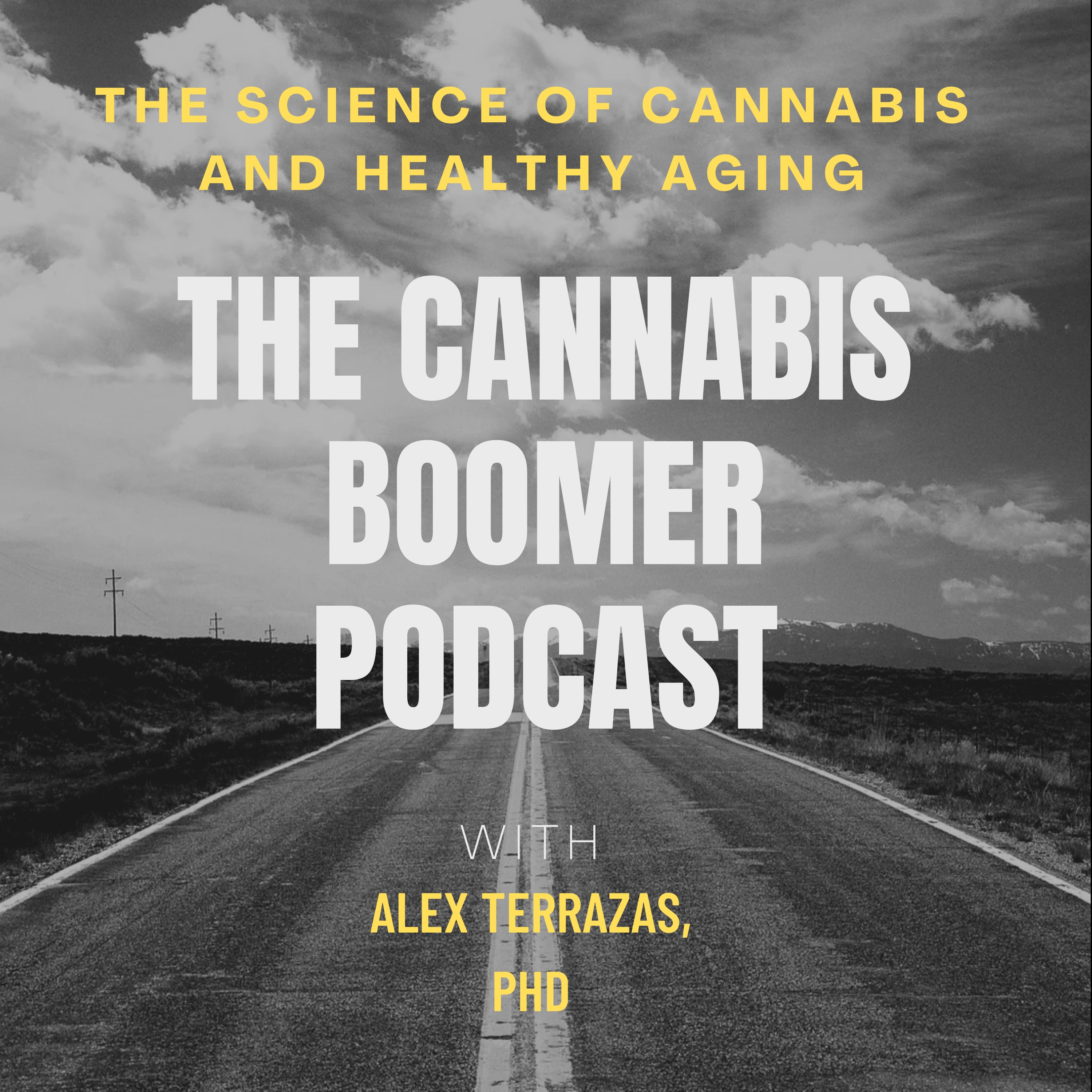The Cannabis Boomer's Daily Feed for October 14, 2025
The Cannabis Boomer's Feed for October 14, 2025. The Cannabis Boomer reviews the top news story and reviews 3 cannabis science news articles. In the news: Ohio Governor Mike DeWine has issued an emergency order banning the sale of "intoxicating hemp" products, including certain THC drinks and synthesized hemp items often labeled as Delta 8.
In new publications:
Cannabis Use and the Risk of Arrhythmias: Insights From a Large Retrospective Multicenter Analysis by Vargas and others.
Therapy in Athletics: A Review of Current Cannabis Research to Evaluate Potential Real-World Cannabinoid Applications in Sport
Genome-wide association studies of lifetime and frequency of cannabis use in 131,895 individuals by Thorpe et al.
#cannabis #THC #cannabis science #older adults #cannabinoids #baby boomers #cannabisboomerpodcast
Transcript
[0:0:0.0]
On today's Cannabis Boomer's Journal of News and Reviews in Cannabis Science, Dr. Alex Terrazas PhD gives his take on the latest findings in cannabis research.
But first. here is The Cannabis Boomer's top cannabis news story.
,:Ohio Governor Mike DeWine has issued an emergency order banning the sale of "intoxicating hemp" products, including certain THC drinks and synthesized hemp items often labeled as Delta 8. The ban applies to any retailer or manufacturer in Ohio and will be enforced by state and local authorities, who can seize products and fine businesses $500 per day for non-compliance. The order is set to last 90 days, though lawmakers could choose to extend or let it expire. Several businesses have filed a lawsuit against the governor over the ban, and some, like Cappy's Wine and Spirits, are facing significant financial losses. The move aims to restrict access to these unregulated products, which can contain high levels of THC.
[0:1:13.86]]
And now the Cannabis Boomer reviews two recent cannabis science publications.
[0:1:19.82]
First up is Cannabinoid Therapy in Athletics: A Review of Current Cannabis Research to Evaluate Potential Real-World Cannabinoid Applications in Sport by Thompson, AlcornHere is my take. This review article examines the potential therapeutic applications of cannabinoids in the context of athletics, considering the evolving legal landscape and attitudes towards their use in professional sports. These are the key findings: Key findings: The review highlights the growing interest in the therapeutic potential of cannabinoids for athletes, with anecdotal reports suggesting benefits for issues like anxiety and brain injuries. However, stigma, confusion, and a lack of education persist, hindering a cohesive understanding among sports organizations and athletes. Methods used (brief): This is a review article that synthesizes current research on the applications and implications of cannabinoid use in athletics. Clinical/practical implications: The review underscores the need for more research and education to address the evolving attitudes towards cannabinoids in professional sports and their potential therapeutic benefits or harms. The results are interesting but keep in mind that Methodological shortcomings (brief): The review does not provide a systematic or comprehensive analysis of the existing research, and the quality and limitations of the included studies are not thoroughly evaluated.
Next up: Cannabis Use and the Risk of Arrhythmias: Insights From a Large Retrospective Multicenter Analysis by Vargas and others. Here is my take. This study examined the association between cannabis use and the risk of arrhythmias using a large, real-world dataset. Here is what I found interesting. Key findings: Cannabis use was associated with an increased risk of arrhythmias, including atrial fibrillation, ventricular tachycardia, and sudden cardiac death. Methods used (brief): This was a retrospective, multicenter analysis of a large real-world dataset. Clinical/practical implications: The findings suggest that healthcare providers should be aware of the potential arrhythmogenic effects of cannabis use and consider this when caring for patients. Some methodological challenges are that Methodological shortcomings (brief): The study was observational and retrospective, and the authors note the need for further research to establish causality and understand the underlying mechanisms.
Next up: Genome-wide association studies of lifetime and frequency of cannabis use in 131,895 individuals by Thorpe et al. This is my summary. This genome-wide association study (GWAS) identified genetic variants associated with lifetime and frequency of cannabis use in a large sample of over 130,000 individuals. The findings were: Key findings: Two loci near CADM2 and GRM3 were associated with lifetime cannabis use, and one locus near CADM2 was associated with frequency of cannabis use. Methods used (brief): Genome-wide association studies were conducted to identify genetic variants associated with lifetime (N=131,895) and frequency (N=73,374) of cannabis use. Clinical/practical implications: The identified genetic variants may provide insights into the biological mechanisms underlying cannabis use and could inform future research on the genetics of substance use disorders. The results are interesting but keep in mind that Methodological shortcomings (brief): The study was limited to individuals of European ancestry, and the cross-sectional design cannot establish causal relationships between the identified genetic variants and cannabis use.
[0:5:49.85]
You've been listening to The Cannabis Boomer's Journal of News and Reviews in Cannabis Science. The Cannabis Boomer Podcast is not just for baby boomers and older adults but for all adults who are interested in the science of cannabis and health. Join the Cannabis Boomer daily for these concise scientific reviews and visit The Cannabis Boomer Podcast for in-depth looks and interviews.

